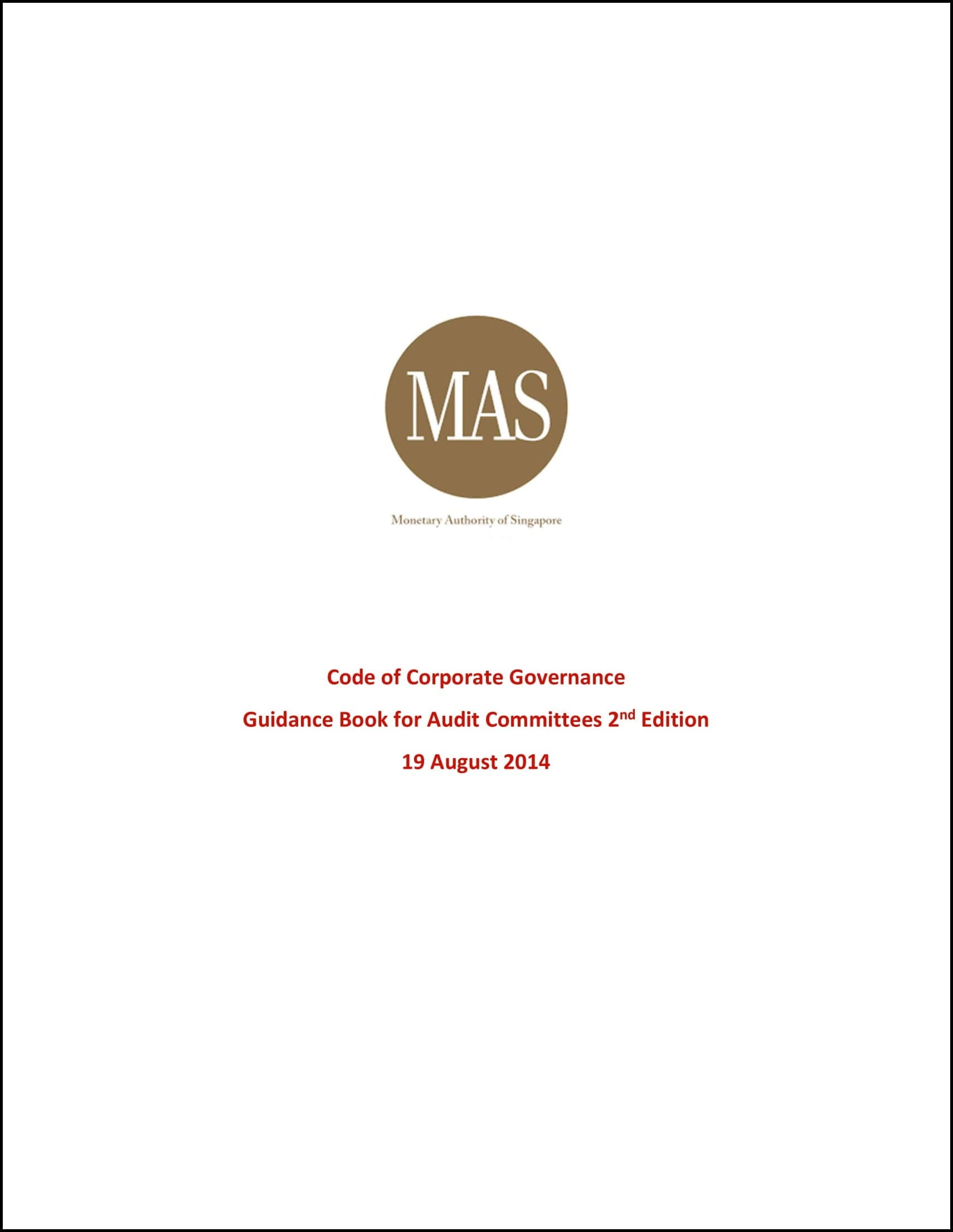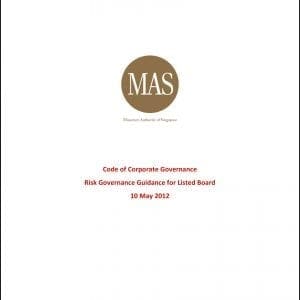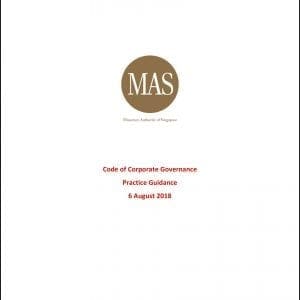Singapore – Monetary Authority of Singapore
Singapore – Monetary Authority of Singapore – Code of Corporate Governance – Guidebook for Audit Committees – 19 August 2014. Covering:
Foreword
Chairman’s Message
Acknowledgements
How to use this Guidebook
Table of Abbreviations
Roles and Responsibilities of Audit Committees
Section 1: Audit Committee Composition
-
- Independence and Objectivity
- Role of Nominations Committee in Audit Committee Appointments
- Selection of Audit Committee Members
- Selection of Audit Committee Chairman
- Terms of Reference
- Tenure of the Audit Committee
Section 2: Audit Committee Agenda
-
- Interaction with the Board and Delegation of Responsibilities
- Tone from the Top
- Setting the Annual Work Plan
- Audit Committee Calendar
- Conduct of Meeting
- Performance Assessment
- Training
- Interested Person Transactions
- Whistle-blowing
Section 3: Risk Management and Internal Controls
-
- Risk Governance and Oversight Structures
- Board Assurance Framework
- Enterprise Risk Management (ERM) and Internal Control Framework
- Assurance Framework
- Control Deficiency Evaluation
- Disclosure Requirements
Section 4: Internal Audit
-
- Establishing an Internal Audit Function
- Considerations for an In-house Function
- Considerations for an Outsourced Internal Audit Function
- Common Issues Relating to the Audit Committee’s Oversight on the Internal Audit Function
Section 5: Financial Reporting
-
- Competence of the Finance Team
- Overseeing the Integrity of Financial Statements
- Other Key Financial Information
- Factors Indicative of Weaknesses in Financial Reporting Process
Section 6: External Audit
-
- Role of External Auditors
- Audit Scope and Approach
- Management Letter
- Cost-Effectiveness
- Private Session with External Auditors
- Engagement of External Auditors
- Auditors Independence
Appendicies
Appendix A – Audit Committee Composition
- Appendix A1: Sample Confirmation of Directors Independence Form
- Appendix A2: Sample Audit Committee Terms of Reference
Appendix B – Audit Committee Agenda
- Appendix B1: Audit Committee Annual Agenda Planner
- Appendix B2: Examples of Good Practices for an Effective Audit Committee Chairman
- Appendix B3: Sample Audit Committee Self-assessment Checklists
- Appendix B4: Effective Orientation Programme Topics
- Appendix B5: Differences between Related Party Transactions (RPT) and Interested Person Transactions (IPT)
- Appendix B6: Sample Interested Person Transactions (IPT) Policy
- Appendix B7: Sample Template on Disclosure of Director Interests
- Appendix B8: Examples of Indicators of Potential Related Party Transactions (RPT)
- Appendix 9: Examples of Motivations for Related Party Transactions (RPT)
- Appendix 10: Examples of Indicators of Fraud in Related Party Transactions (RPT)
- Appendix 11: Elements of a Good Whistle-blowing Policy
- Appendix 12: Example of a Whistle-blowing Policy
Appendix C – Risk Management and Internal Controls
- Appendix C1: Possible Types of Risks faced by a Company
- Appendix C2: Risk Governance and Oversight Structures
- Appendix C3: Internal control Framework Overview
- Appendix C4: Evaluating Control Deficiencies
- Appendix C5: Disclosure Requirements
Appendix D – Internal Audit
- Appendix D1: Benefits and Drawbacks on various options for setting up an Internal Audit Function
- Appendix D2: Sample Internal Audit Activity Charter
- Appendix D3: Internal Audit Activity Measurement Criteria
- Appendix D4: Evaluating the Effectiveness of the Internal Audit Team
- Appendix D5: Private Session with the Internal Auditor
Appendix E – Financial Reporting
- Appendix E1: Assessing Fair Values and Estimates in Financial Reports
Appendix F – External Audit
- Appendix F1: Possible Questions for the Private Session with the External Auditor
- Appendix F2: Sample Checklist for Evaluation of External Auditors





Reviews
There are no reviews yet.